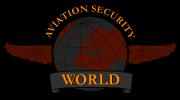Namibia: Upgrading of Airports
It is against this background that the governments of the Republic of Namibia and the Kingdom of Spain signed a cooperation agreement for the upgrading and rehabilitation of airports and civil aviation infrastructure, amongst others.
This contract for the rehabilitation and upgrading of airports and civil aviation infrastructure in Namibia was launched by His Excellency, Dr Sam Shafiishuna Nujoma, former President of the Republic of Namibia on November 10, 2004 at Walvis Bay.
Under these agreements, the government through the Ministry of Works, Transport and Communication and a Spanish group of companies, consisting of Defex, Page and Ineco, referred to as Inepade, agreed to work together to complete this project within a time frame of 24 months. Two Spanish financial institutions and the Government of the Republic of Namibia are funding this important project, worth approximately Euros 32,268 million.
The project consists of three components, being civil works, aeronautical and airport equipment and fire-fighting and crash rescue vehicles.
The civil works component consists of:
- The design and construction for the lengthening and widening of the existing runway, a new taxiway and a new apron, a new access road and security fencing for Walvis Bay airport.
- Investigations into the water supply at Walvis Bay airport and preparation of the design for the upgrading of the existing water supply network.
- Investigations into the fuel hydrant system at Hosea Kutako international airport and the preparation of a design for the upgrading and repairs to the existing system.
- The preparation of a basic design for a new terminal building at Walvis Bay airport.
The Aeronautical and Airport Equipment Will Consist Of:
- Air traffic control communications equipment, which will be provided at Walvis Bay airport, Hosea Kutako international airport, Eros airport, Lüderitz airport and at the area control centre at Eros airport. The new area control centre and control tower at Eros airport will be fully furnished and equipped with modern state-of-the-art equipment.
- A new control tower will be constructed at Lüderitz while the control towers at Hosea Kutako international airport and at Walvis Bay airport will be renovated.
- Remote radio stations at Oshakati, Opuwo, Outjo, Rehoboth and Keetmanshoop will be provided with new communication equipment and five new stations, at Maroelaboom, Rössing Mountain, Omaere (east of Gobabis), Stampriet and Lüderitz will be established to provide a more optimum coverage of the country providing better air traffic services.
- Runway and approach lights will be provided at Walvis Bay and Lüderitz airports while the runway lights at Hosea Kutako international airport will be provided with a remote control system. The runway and approach lighting at Walvis Bay will meet the International Civil aviation Organization (ICAO) recommendations for the new generation of large aircraft.
- A control air traffic three (3) instrument landing system will be installed at Walvis Bay airport. Walvis Bay airport will therefore be able to handle intercontinental wide bodied aircraft under all weather conditions, day and night.
- The Hosea Kutako international, Eros, Walvis Bay and Lüderitz airports will receive meteorological equipment fully integrated into the aviation systems. An automated terminal information service system will be supplied providing pilots with direct radio access to meteorological information.
- The terminal building and other areas at Hosea Kutako international airport will be provided with new security and access control systems including surveillance cameras, access control at doors, a security control room equipped with monitor screens, and a new entry/exit control system for the public parking area.
Fire Fighting and Crash Rescue Vehicles
Seven fire fighting and crash rescue vehicles will be provided. These vehicles will be stationed at Hosea Kutako international, Walvis Bay and at Ondangwa airport. The supply of these vehicles will enable the Namibia Airports Company to meet the International Civil Aviation Organisation's fire fighting and crash rescue requirements. Finally, we as Namibians would like to extend our sincere appreciation to all stakeholders and the Spanish consortium engineers who are hard at work to make this project a success. Furthermore, we thank the consultants on this project and all other role-players for their hard work and dedication.
I am confident that after the completion of the project, Namibia will not only be a leading country in the SADC region, but on the African continent with regard to the aviation infrastructure.
New Era









0 Comments:
Post a Comment
<< Home